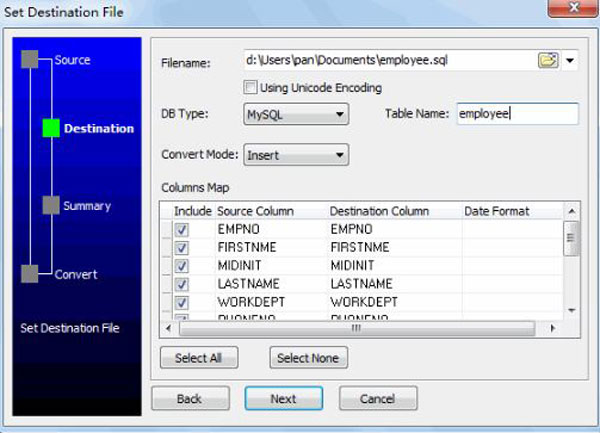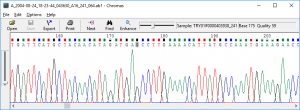
?mn – is a custom file made by Team Gastereler for making it easy to open. 37 Markup languages and other web standards-based formats.35.2 EMC VMware ESX, GSX, Workstation, Player.35.1 Microsoft Virtual PC, Virtual Server.25.5 Other file formats pertaining to audio.15 Object code, executable files, shared and dynamically linked libraries.1.1 Physical recordable media archiving.While MS-DOS and NT always treat the suffix after the last period in a file's name as its extension, in UNIX-like systems, the final period does not necessarily mean that the text after the last period is the file's extension. Some filenames are given extensions longer than three characters.
#Applied biosystems data file converter windows
Examples of operating systems that do not impose this limit include Unix-like systems, and Microsoft Windows NT, 95- 98, and ME which have no three character limit on extensions for 32-bit or 64-bit applications on file systems other than pre-Windows 95 and Windows NT 3.5 versions of the FAT file system. Many operating systems do not limit filenames to one extension shorter than 4 characters, as was common with some operating systems that supported the File Allocation Table (FAT) file system. Filename extension it is usually noted in parentheses if they differ from the file format name or abbreviation. This is a list of file formats used by computers, organized by type. You can help by adding missing items with reliable sources. Typically the terms Y′CbCr, YCbCr, YPbPr and YUV are used interchangeably, leading to some confusion.This is a dynamic list and may never be able to satisfy particular standards for completeness. One practical example would be decreasing the bandwidth or resolution allocated to "color" compared to "black and white", since humans are more sensitive to the black-and-white information (see image example to the right). Y′CbCr is used to separate out a luma signal (Y′) that can be stored with high resolution or transmitted at high bandwidth, and two chroma components (C B and C R) that can be bandwidth-reduced, subsampled, compressed, or otherwise treated separately for improved system efficiency.

By doing this, subsequent image/video processing, transmission and storage can do operations and introduce errors in perceptually meaningful ways. YCbCr and Y′CbCr are a practical approximation to color processing and perceptual uniformity, where the primary colors corresponding roughly to red, green and blue are processed into perceptually meaningful information.

Same happens with JPEG: it has BT.601 matrix derived from System M primaries, yet the primaries of most images are BT.709. Nevertheless that rule does not apply to P3-D65 primaries used by Netflix with BT.2020-NCL matrix, so that means matrix was not derived from primaries, but now Netflix allows BT.2020 primaries (since 2021).

The transformation is defined in ITU-T H.273. If the underlying RGB color space is absolute, the Y′CbCr color space is an absolute color space as well conversely, if the RGB space is ill-defined, so is Y′CbCr. Y′CbCr color spaces are defined by a mathematical coordinate transformation from an associated RGB primaries and white point. Y′ (with prime) is distinguished from Y, which is luminance, meaning that light intensity is nonlinearly encoded based on gamma corrected RGB primaries. Y′ is the luma component and C B and C R are the blue-difference and red-difference chroma components. YCbCr, Y′CbCr, or Y Pb/Cb Pr/Cr, also written as YC BC R or Y′C BC R, is a family of color spaces used as a part of the color image pipeline in video and digital photography systems. The Y′ image is essentially a greyscale copy of the main image. A color image and its Y′, C B and C R components.


 0 kommentar(er)
0 kommentar(er)
